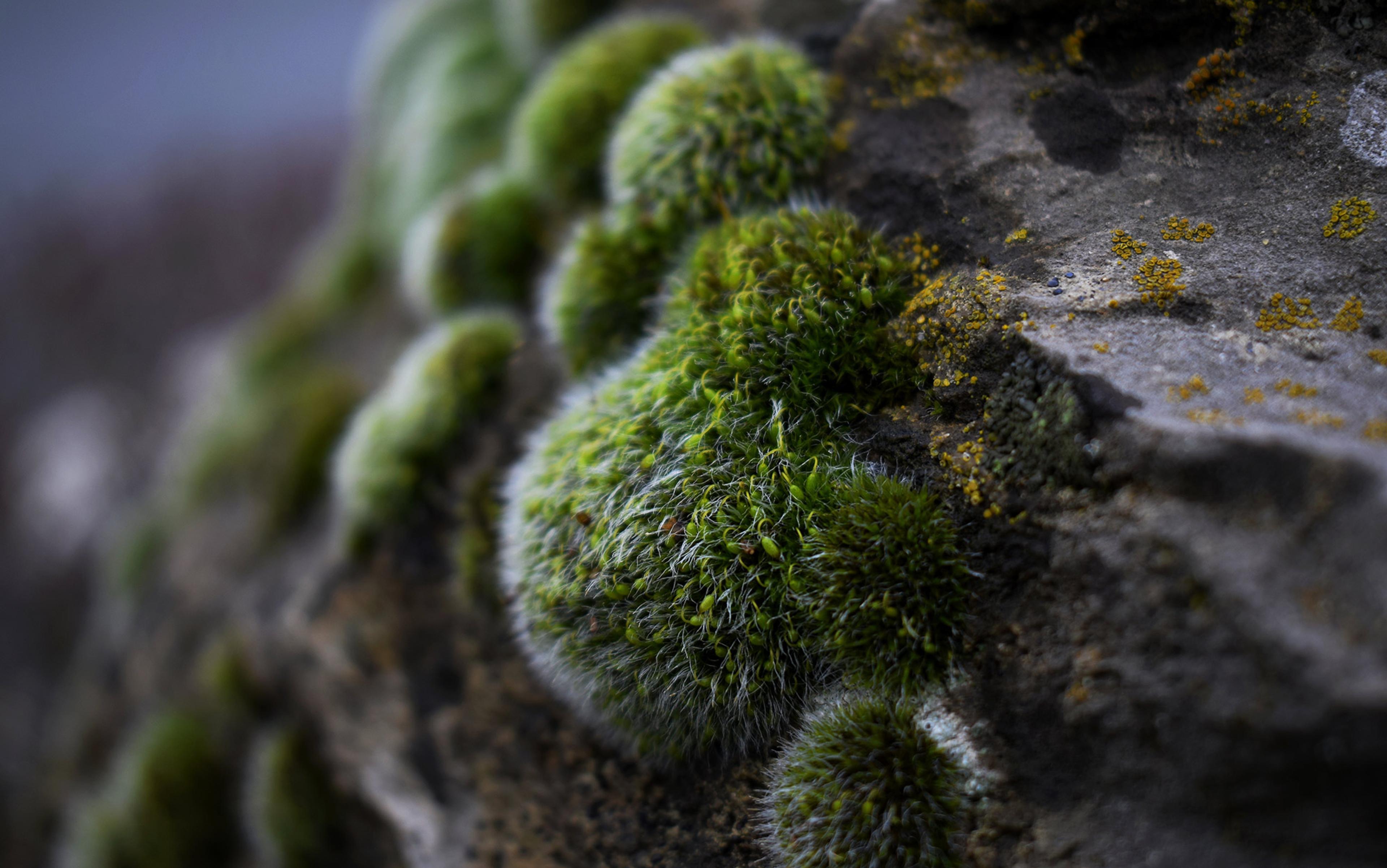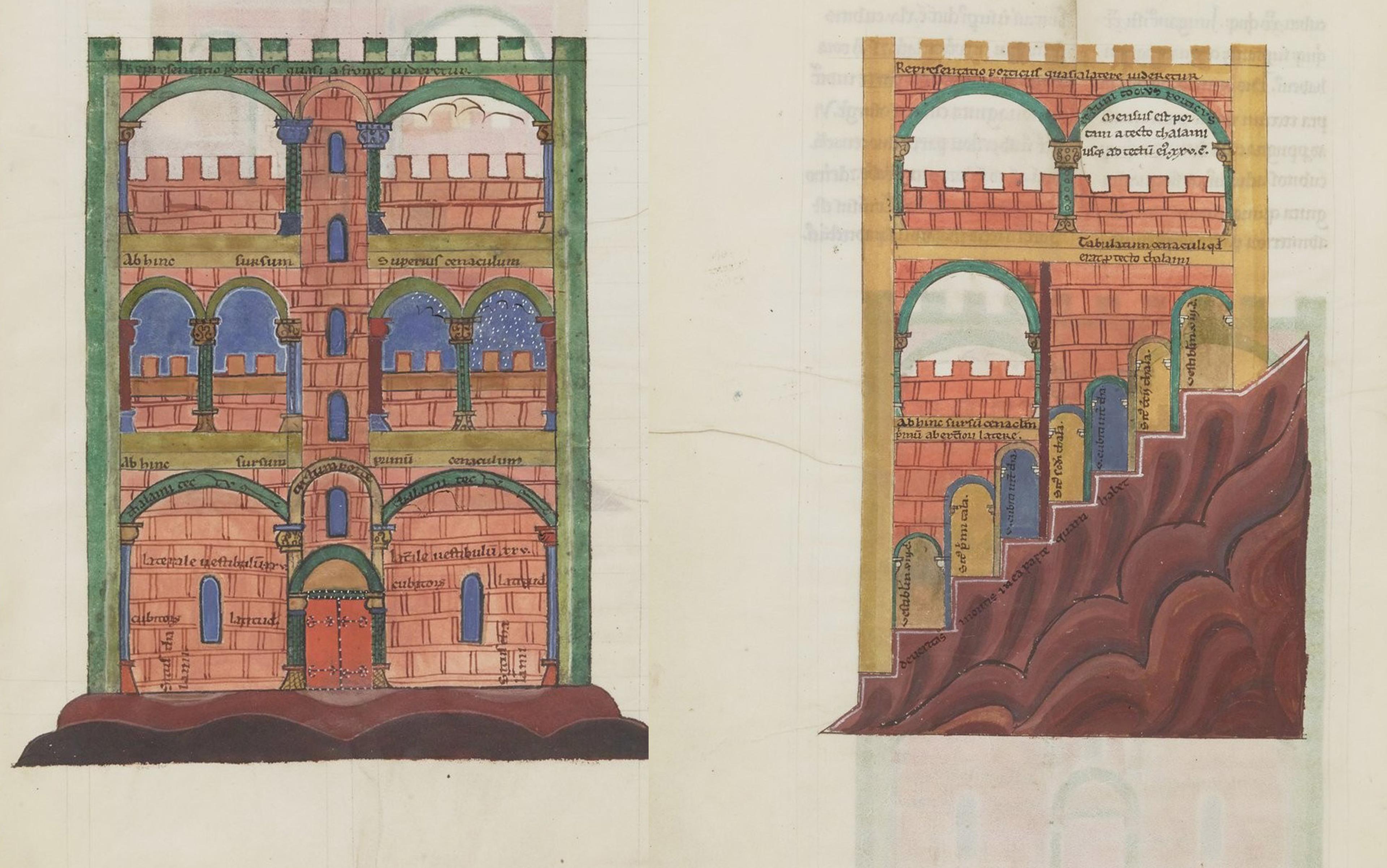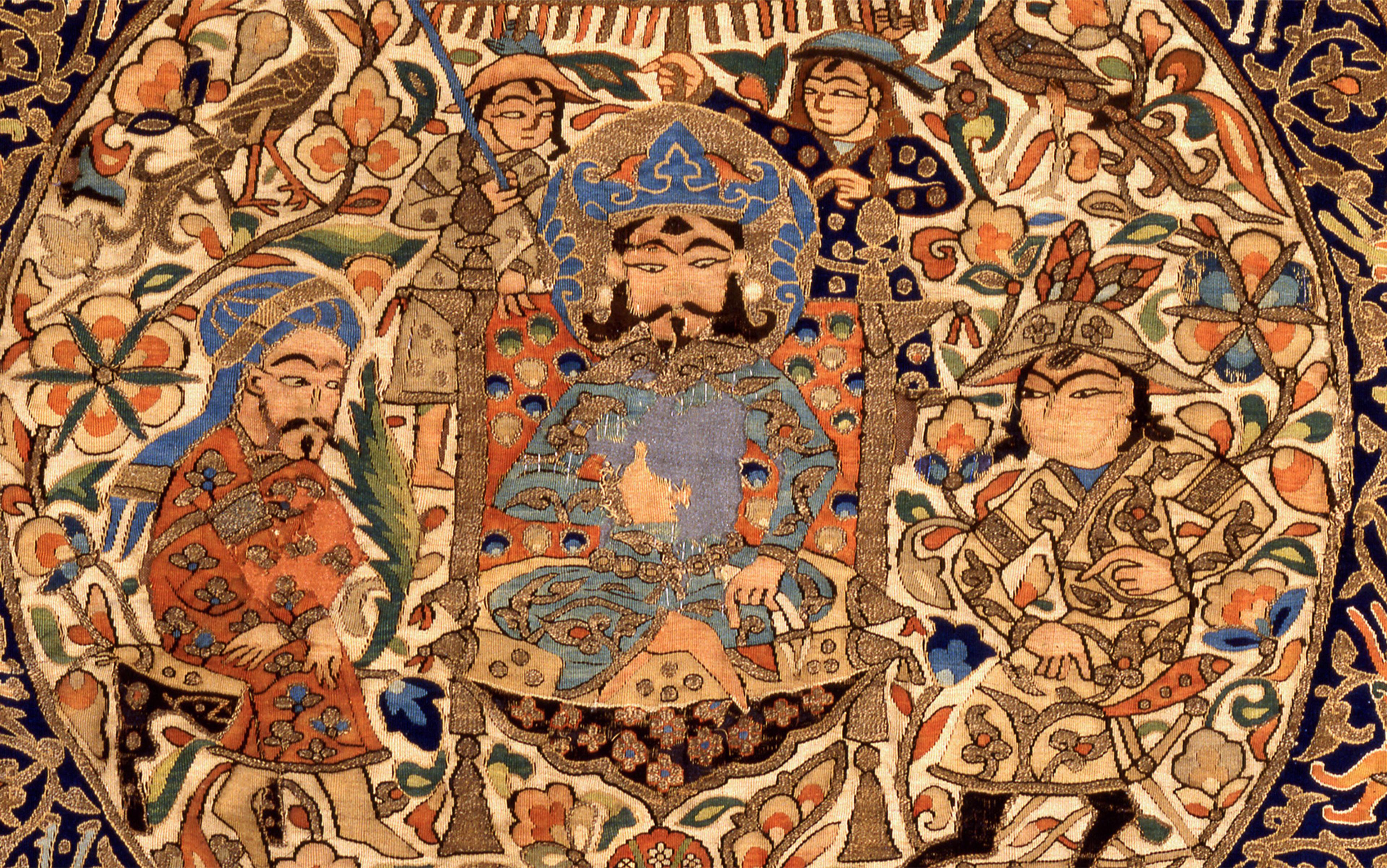On the cusp of winter 2021, I went for a walk in the woods near my house in Oxford. By a bench that overlooks the city, I happened upon a moss-covered log that glistened green under the overcast sky. The moss’s leaves were as tiny and intricate as the finest embroidery, and as thin as – I hate to admit – cling film. I brushed my fingertips over the feathery bed in awe of its minuteness and complexity, before taking a dozen photographs. When was the last time I had touched moss? When was the first? I remember trees, rivers, mountains, but not moss. But, that day, I felt as if moss summoned me to pay attention to its rigour and beauty amid its great arboreal cousins.
Or rather, moss represented something for me. I’d been thinking about touch, about how out of touch with nature I am. I live in a city that has many parks and meadows, but I don’t touch nature enough; rather, I see it – the ornamental birches, the canal, the roses on the hedgerows. In summertime, I’ll swim with friends, or sunbathe and roll in sand and grass, but once we are back in our sanitised homes, I continue to live out of touch. I seek nature’s touch in small, appropriate, hygienic doses.
Winter is the only true season of touching. In winters, no matter how efficiently you dress up, a raindrop will find you. Fogs will enshroud you and leave their wetness on your face. Dry, cold air will crack your lips. As you inhale, mist will touch your nostrils and the inside of your throat. You will feel winter’s touch on the backs of your ears. Winter’s physicality reaches everywhere. But moss works the hardest in winters. Over every log, rock and crevice, it grows and glows.
Over the course of that winter, I touched mosses everywhere in the city: on footpaths and walls, on the barks of willows, on metal-based drain covers, on tombstones, on the roofs of houseboats, on abandoned bicycles, under the railway bridge. Moss likes to grow everywhere as long as there’s enough shade and moisture. A nonvascular plant, it lacks an elaborate root and shoot anatomy; it has no roots to speak of. Mosses absorb water and nutrients from their one-celled leaves, which are uniquely designed to hold water up to 30 times their own weight. In winter, if you’ve ever paused to gaze at a moss bed and touch its surface, you’ll feel as if you’ve touched a wet sponge. You’ll also realise that while a moss bed may feel soft at first touch, it is a multi-textured world down there. As I carefully brush the backs of my fingers against moss beds, tiny stalk-like beings tickle me. Jutting out of moss leaves, these stalks are known as sporophytes; each sporophyte contains a capsule of spores at its outermost end. As wind and water carry these spores away from their source beds, mosses multiply. The sporophytes are considerably taller than the bed to allow the spores to travel far and start a new commune, a new family.
One of the most common mosses in urban settlements is Tortula muralis, or wall screw-moss. It was the first one I noticed, like most beginners do. One day, under a bright blue after-rain sky, I observed that the sporophyte capsules of a wall screw-moss bed growing on a brick fence had swelled to almost thrice their size. It astonished me and I thought it might be another stage in their development that I hadn’t read about yet. Down on my knees, at eye level with the bed, I reached out with a fingertip towards a sporophyte, but my hand stopped itself midway. It took a while for my eyes to adjust but I realised that the capsules had not swelled at all. Each sporophyte was merely holding a tiny water droplet around itself, like a miniature water balloon, or a pregnant belly.
Many minutes had gone by. It started raining again and more water touched and seeped into the moss bed. I remembered to go about my day, which seemed a bit absurd, if not insignificant in front of a moss bed. This, then, is the first lesson that moss taught me: you can touch Time. Not our human time, not even mammal time, but Earth Time. Hours later, when I returned from my chores in the city, the sporophytes were still there, still holding water. Often, it can take 25 years for a moss layer to put on one inch. But the moss has been around for at least 350 million years, being one of the first species to make the journey from water to dry land: moss is our elder relative, as Robin Wall Kimmerer reminds us in Gathering Moss (2003). It is a species that cohabits our cities and apartments, a witness to human time and its catastrophic speed. If only touching moss were enough to live at Moss Time.
Aristotle claimed that touch is the most universal sense. Lately, I’ve come to believe that touching nature may be the most effective means of reconnecting with it, known in contemporary psychology as ‘nature connectedness’. Several studies argue that activities that involve touching nonhuman entities with our bodies – walking barefoot or swimming, for instance – might help us nurture affective and ethical relationships with the nonhuman world.
The phenomenologist Maurice Merleau-Ponty spent his life thinking and writing about the question of human perception. Philosophers before him had theorised that we perceive and process the world through our disembodied brains, our consciousness in the Cartesian sense of the word; and the closest ally of consciousness in this task was sight. But for Merleau-Ponty, it was through the body’s perception and proprioception that we come to know the world: our perceptual awareness of the body’s location with respect to other bodies and objects, and its inter-corporeality: the fact of its material existence within a world of other bodies and objects. While sight is important here – for it is through sight that we tell, in relation to our bodies, whether an object is far or near, large or small – touch is equally, if not more, important.
Moss is touch. It doesn’t poke the skin of the being it touches
In Phenomenology of Perception (1945), Merleau-Ponty writes:
In visual experience, which pushes objectification further than does tactile experience, we can, at least at first sight, flatter ourselves that we constitute the world, because it presents us with a spectacle spread out before us at a distance, and gives us the illusion of being immediately present everywhere and being situated nowhere. Tactile experience, on the other hand, adheres to the surface of our body; we cannot unfold it before us, and it never quite becomes an object. Correspondingly, as the subject of touch, I cannot flatter myself that I am everywhere and nowhere; I cannot forget in this case that it is through my body that I go to the world, and tactile experience occurs ‘ahead’ of me, and is not centred in me.
Touch reorients us to the fundamental condition of being – to the inevitability of others, both human and nonhuman. In touching, we are most vulnerable because we are always also being touched back. The analogy that Merleau-Ponty uses in his posthumously published work, The Visible and the Invisible (1964), is this: when my one hand touches the other, which one is doing the touching, and which one is being touched? We have eyelids; we can pinch our noses and shut our ears; but there are no natural skin-covers. We cannot turn off our sense of touch. To be a human in the world is to be tactile, to always be touching and touched with every single pore of our bodies.
That touching nature could bridge interspecies borders makes sense intuitively. And is there any being in the plant kingdom that embodies touch more than moss and its family, the bryophytes? Moss is touch. It doesn’t poke the skin of the being it touches. And it takes practically nothing from the host it is in contact with: moss is no parasite. Yet it softens trees, prevents soil erosion, and shelters animals too small for us to notice. It is continuously in touch with Earth and all its beings, including us. Inside a rainforest and on the city pavement, moss beckons us. Moss isn’t everywhere and nowhere; moss is here.
In the 921-year history of the University of Oxford, my current home, moss’s touch has enchanted many people. But, as the historian Mark Lawley notes, a separate study of mosses in Britain did not begin until the late 17th century. One of the key figures who recorded the diversity of mosses in Britain in painstaking detail was Johann Jakob Dillenius, a German botanist. Dillenius studied medicine, while maintaining a strong interest in botany, at the University of Giessen where he wrote his first major work, Catalog of Plants Originating Naturally Around Giessen (1718). In the Catalog, he identified several mosses and fungi, under the heading ‘Cryptogams’, denoting plants that reproduce via spores, also known as ‘the lower plants’.
Perhaps only a handful of botanists at the time would have bothered spending their days with their hands touching the ground that other people walk on and animals relieve themselves on. But Dillenius did, and his work impressed William Sherard, a leading English botanist. Sherard had recently acquired a huge collection of plants from Smyrna (present-day İzmir in Turkey) and had been searching for somebody to help organise it. He offered Dillenius a job at his garden in Eltham, Kent; and, in 1721, Dillenius migrated to Britain to work on Sherard’s plant collection, the mosses of Britain, and a pinax (illustrated book) of Britain’s plants.
For the first seven years of his time in Britain, Dillenius lived between Eltham and his own lodgings in London. In 1724, he produced his first book in Britain, the third edition of Synopsis methodica stirpium Britannicarum, originally written by the Cambridge-based botanist and naturalist John Ray in 1670. In the second edition of his Synopsis (1696), Ray had identified 80 types of mosses to which Dillenius added, according to George Claridge Druce’s account, 40 types of fungi, more than 150 types of mosses, and 200-plus seed plants. Dillenius divided cryptograms into Fungi and Musci, excluding ferns and equisetums.
For perhaps the first time, somebody had paid meticulous and singular attention to the ‘lower plants’. It fascinated me to imagine an 18th-century gentleman spending hours and years touching and collecting the mosses of Kent, London, Oxford and Wales. We don’t know much about Dillenius’s inner life, but one can glean from his letters that he loved mosses and liked his life in their company. His life among English people? Not so much.
Why did Dillenius, a rather unwelcome immigrant, pour all his energy and hope into plants we tend to overlook?
After three years of exacting work, his edition of Ray’s Synopsis was published, but it did not bear his name. His publishers (and Sherard) feared that the people of Britain would not appreciate the name of a foreigner on a book about the mosses of their land. In a letter to Richard Richardson, another leading English botanist and a colleague, Dillenius announced the publication of his anonymous Synopsis and regretted that he didn’t have the opportunity to dedicate the book to Dr Richardson publicly. Despite this omission, he wanted Richardson to convince Sherard to let him work on his dream – the History of Mosses. He wrote:
I mean the History of Mosses, if I could find time to finish it … would [you] please … persuade him to let me have one day in a week for this purpose.
It wouldn’t be until 1732 that Dillenius could find that one day a week he needed to write his History.
While Dillenius enjoyed his work on the pinax, his true passion lay with the lower plants. For approximately four years, he worked on Sherard’s pinax hoping that one day he’d be free to devote himself to the mosses. When Sherard died in 1728, Dillenius’s fate changed overnight. Sherard left his books and plants to Dillenius and a considerable amount of money to be used toward the maintenance of a professorship of botany at Oxford. In his will, he appointed Dillenius as the first such Sherardian professor.
In 1728, Dillenius moved to Oxford where he lived until his death. Here, James Sherard, the younger brother of his former patron, who behaved rather contemptuously towards Dillenius, asked him to stop working on the mosses and the pinax, coercing him instead into writing a book on the garden at Eltham, Hortus Elthamensis (1732), for which Dillenius endured significant financial loss.
As a professor of botany, Dillenius had entered the elite circle of scientists and botanists in Britain. By 1724, he’d been elected as a member of the Royal Society, but his personal life remained unfortunate. Before migrating to Britain, he’d pilloried a contemporary German botanist, Augustus Quirinus Rivinus, which made Dillenius a despised figure in academic circles. He had some admirers, most important of them Carl Linnaeus, the Swedish botanist whose work Systema Naturae (1735) radically altered the field of botany, but he didn’t have many friends and we know next to nothing about his personal life.
After Hortus, Dillenius pledged his career and life to the study of mosses and, in 1741, he published Historia Muscorum, or History of Mosses. In painstaking detail, over 576 pages and in 85 illustrated plates, the book described 661 taxa of lower plants, including mosses, fungi, lichens, algae, liverworts, hornworts and lycopods. He divided the Musci, or mosses, into six genera: Mnium, Hypnum, Polytrichum, Bryum, Sphangnum and Lycopodium – classifications that are useful today. But the book, his life’s mission, did not fare well in the market. Soon, he started writing an abridged version that he thought people might want to buy at a reduced price, but time had bested him. His Italian contemporary Pier Antonio Micheli had already written a detailed and genre-defining book on the cryptogams more than a decade before. In 1747, Dillenius died of a stroke at his home in Oxford, the abridged version of the History of Mosses unpublished.
Here was somebody who had touched mosses his entire adult life, breathed and lived among mosses. I wonder if it reconnected him with nature. I wonder if he was happy. Did he feel anger, disappointment or betrayal when his name was removed from his book? Did he feel used and misled when James Sherard left him with little to no money? What was it like being considered a foreigner after spending your entire adult life in a place? Was he a foreigner to mosses too? Did he miss home? The saddest part of Dillenius’s story is that even today, his contribution is grouped under ‘Continental Botanists’ in the history of British bryology. He is neither celebrated in Germany, his homeland, nor in England, where he lived and is buried. His was a migrant’s fate.
I felt an immediate affinity with Dillenius, a stranger who’d become a friend to me. During my walks along the Thames, I kept his stunning illustrations to hand and learnt to differentiate Polytrichum from Mnium in his company. I’d always enjoyed gazing at trees and listening to the woodland winds, but it takes an intentional reorientation of the mind and the senses to attend to moss. Moss doesn’t leap at you, it doesn’t arrest you like a pine’s needles or an oak’s arms; even when it appears marvellous, it doesn’t sustain your interest long enough to observe its minutiae. I wondered why a person like Dillenius, a rather unwelcome immigrant, poured all his energy and hope into plants we tend to overlook?
As a historian, I’m tempted to list reasons: the rise of the scientific worldview, colonialism, the impulse to taxonomise the world of plants and peoples, the establishment of a botanical garden in Giessen in 1609. And all this might well be correct, but why mosses? Why this man? The archive is never complete.
I grew up in a rain-drenched town in Punjab, India, where most months of the year I waded through mud and blocked rainwater to reach the corner shop of my neighbourhood. During monsoon, while the heavens poured and thundered, I’d play catch with my friends in the community park. I remember slipping over moss-covered rocks. I remember our bruised hips. We’d slip over kai twice, sometimes three times in one game. In Punjabi, kai doesn’t exactly mean moss. We don’t taxonomise lower plants into one category, like Bryophytes, based on their method of reproduction. The ancient texts of Ayurveda (a traditional healing system of north India) such as Susruta Samhita and Caraka Samhita classify plants into different categories based on their shape, texture, appearance, medicinal properties and habitats.
For instance, Ceratophyllum demersum, or coontail, a hornwort, is known in Ayurveda by the names jalini, jalaja and jalanili, all of which mean: a plant that grows in water. Oral culture too attributes plants that we now know to be quite different morphologically to one category. I wonder if we classify them based on how they feel to our bodies, on the basis of touch, since kai is a common word used for all kinds of slippery plants – algae, lichen, mosses (but not all mosses). Any plant growth, especially near the ground, that makes you slip, fall or both is kai.
The phrase that we use to refer to algae, lichen or a slippery moss over a rock is pathar utte kai jammi hoyi hai. The phrase has two meanings, at least. Roughly, it means: ‘Moss is frozen over the rock’ or ‘Moss is birthed by the rock.’ The rock is to moss what the soil is to a tree. I don’t mean to romanticise things, but I suspect the business of scarping and selling moss will never take off in Punjab. In the UK, however, moss is used ornamentally in homes, airports and hotels. Sphagnum moss, also known as peat or bog moss is used to increase the productivity of gardens; its habitats are home to rare wildlife and carbon reserves, but its use in horticulture is colossal. I wonder if, in addition to the labyrinth of a world-political economy in which Punjab has mostly been a site of agricultural experimentation and extraction rather than consumption, language has had a role to play in these historically different approaches to moss?
In English, moss carpets a garden. Built into the language is the idea of moss as decoration, moss as a beautiful addition to nature. The word ‘carpet’ originates from the Latin carpere, which means to ‘pull to pieces’. To carpet an object is to pull and cover, cover and pull, the two actions deciding the fate of moss.
Modern botany owes a considerable debt to opportunities provided by colonialism
In the centuries that followed Dillenius, moss was pulled from all over the world to cover other worlds. In the name of science and civilisation, colonisers extracted and exploited Indigenous peoples and foreign lands and ecosystems. Historians of science such as Patricia Fara and Zaheer Baber have demonstrated that botanical expeditions of English and European scientists such as Joseph Banks helped consolidate Britain’s imperial power. In accompanying colonial officials on expeditions around the globe, botanists acquired economically and culturally pertinent botanical and agricultural knowledge through their practices of collection in various parts of the world including India.
In the 1780s, the third Sherardian Professor of Botany at Oxford, John Sibthorp, travelled to Greece and present-day Turkey to observe and collect lichens. In April 1795, Sibthorp went to Cardamoula (present-day Kardamyli in Greece). Remarking on his journey, he wrote: ‘The nature of man seemed here to recover its erect form; we no longer observed the servility of mind and body which distinguishes the Greeks subjugated by the Turks.’ This was the era of colonialism and orientalism; Sherardian professors of botany were no exception. Modern botany and its near-global dominance owes a considerable debt to opportunities provided by colonialism.
That the scientific collection or extraction of plants and the subjugation of peoples occurred simultaneously means that the colonisers touched everybody. Robert Clive touched India in 1748, only a year after Dillenius’s death, which arguably defined the course of British colonialism in the subcontinent. By 1794, the year Sibthorp wrote his Flora Oxoniensis, the most valuable historical account of the flora of Oxfordshire we have today, the East India Company had firmly established itself in India.
The modern history of touching moss is one of elitism, colonialism and racism. When I touch moss on the ancient walls, cobblestone streets and gated colleges of Oxford, I realise touching moss has never been a question of intent but one of access. In 19th-century Britain, there were many working-class botanists, men and women who’d taught themselves botany by memorising the Latin names of plants in pubs after long and taxing work-hours. But the idea of doing botany in a public house was utterly disgraceful and horrifying for elite classes. While artisan botany became widespread in Manchester and Lancashire, it didn’t take off amid the spires of Oxford.
In Britain’s colonies, colonialism turned touch into a privilege. While colonisers employed Indigenous peoples to do the touching for them, they retained the rights to knowledge about that which the ‘natives’ touched: mosses and the more-than-human world. They also repudiated any emotions and affects that anybody may have had towards the nonhuman. A plant became an object to be scrutinised. A moss, a carpet to be scraped and examined. You touch moss to bring it home and look at its structure under your university’s new microscope. You touch moss and yet you do not touch moss. Touching mosses, I did not feel at one with nature. I felt severed. There is no pure touch. No return to an unadulterated relationship with nature. No Moss Time. Between my fingertips and the sporophytes of a moss bed exist centuries of exploitation and extraction, and behind them, human hands, and the all-too-human touch.
While working on this essay, I regularly visited an ash tree near my house. On its trunk, two types of mosses had begun to grow: common striated feather moss and Atrichum undulatum, a moss species with star-shaped leaves. I touched them every other day, but I didn’t know what to think or say about them. I wanted moss to tell me its story. Quiet, humble and peaceful, it said nothing. For weeks, I came home vexed and confused. Perhaps moss didn’t want me to tell its story in isolation, since moss is never alone. If anything, its story is one of touching barks, water, rocks, mountains, logs and humans. I can’t go to moss for peace and solitude, or to rejuvenate myself in nature’s lap, perhaps not even to ruminate on the nature and limitations of language. Touching moss will amount to nothing if I don’t question the web of human and more-than-human relationships from within which I touch it.
Perhaps it is absurd, even fatuous, to contemplate if there is anything redemptive about touch. If touch itself, as an intersubjective sense of perception, has become corrupt, where does that leave our forever touching bodies and selves? I want to push against this interpretation. Because there is a touch beyond the history of touching too: the human capacity for touch and its existential, precarious, fleshy nature. The kind of touch that animated Dillenius’s days in Oxford despite everything. In a history of botany in England, the author Richard Pulteney in 1790 calls Dillenius as a ‘recluse’, described by a correspondent once as ‘busy in painting Fungi’. Busy touching nature.
Richard Kearney, a continental philosopher, writes in his book Touch (2021):
To touch and be touched simultaneously is to be connected with others in a way that prizes us open. Flesh is open-hearted – where we are most exposed, skin on skin, keenly attentive to wounds and scars (starting with the navel), alert to preconscious memories and traumas.
In the Greek myth of King Midas, cursed with the ability to turn whatever he touches into gold, what perturbs and touches me is Midas’ desire to touch, and the metallic loneliness of his hand, but also what he forgets and what he remembers each time he touches somebody.
The ‘fleshiness’ of touch bares us to the other – human and nonhuman, but also ourselves
Touch as a haunting reminder of the violence inherent in the body. Touch that returns us to the past and its rugged terrain. As a kid, I used to play touch-and-go with my friends, the whole premise of which is that one person chases everybody else in an attempt to touch them. You had to tread the fine line between running with full force towards your friends, and hurting them with your eager hand. It wasn’t easy, and we sustained a few injuries, but we also came up with a solution: your touch counts only if it doesn’t hurt anybody.
Touch as a cautious hand. The ‘fleshiness’ of touch bares us to the other – human and nonhuman, but also ourselves. The act of touching constitutes both the perceived and the perceiver, proposes Merleau-Ponty. In touching the nonhuman, I’m thrown into the world, in a Heideggerian sense, over and again, and each time I must reintegrate myself as what I was before touching. In this continuous operation of disintegration and reintegration, there is a generative moment where I’m not certain who I am, neither past-me, nor future-me. Am I human? Am I a part of this world? Can I change?
If, in the act of touching nature, I’m not practising guileless ‘nature connectedness’ but a complicitous, historical and also utopian touch, perhaps touch can be reconceptualised as a complex, layered and resilient sense-perception. Perhaps it is the other way round. Not touch itself as the deliverance of one-dimensional, immediate experience, but what we – our history and present – have engineered it to be. Perhaps the apparent superficiality of touch is the fiction. The histories (colonial, racial, elitist) of human relationships with the nonhuman may have whitewashed and pigeonholed touch and its potential for radical reciprocity and for reckoning with the past and the present. I wonder if I can cultivate and harness touch not as a cure for my estrangement from the nonhuman world, but as an open-hearted exposure to that world, and ours. Touch from the old French toche, a blow or, even, an attack. Touch as a prizing open.
Just before spring, I went for a walk in the woods. More logs had fallen. Glittering wood-moss, a moss species with red stems and feathery leaves, shimmered on the forest floor. I was reminded of the poem ‘Wild Garlic’ (2020) by Séan Hewitt in which he writes: ‘The world is dark / but the wood is full of stars.’ With no moon in sight and an overcast sky, the walk back home was melancholy. I pulled out my keys from my jacket and they fell on the ground. Under the streetlight, a silver-green moss, Bryum argenteum, shone out, cradling my keys. Moss is Earth’s memory living at my doorstep. I must welcome it inside: I must touch it and let it undo me.






